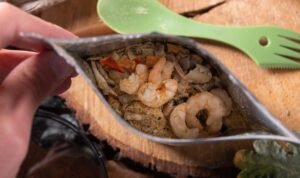Space travel is one of the harshest environments imaginable for storing and transporting supplies. There’s no refrigerator floating outside the International Space Station, no supermarket orbiting the Moon, and no margin for spoiled food or degraded medicine. That’s where lyophilization steps in—quietly ensuring that astronauts have safe, lightweight, and long-lasting resources on hand.

From the very beginning of human spaceflight, NASA and other space agencies have faced a critical challenge: how to pack enough nutritious, safe food for weeks or months without it spoiling. Freeze-drying offered the perfect solution. By removing water through sublimation, lyophilized meals can last years without refrigeration, all while keeping much of their original flavor, texture, and nutritional value intact.
For astronauts, weight matters. Every extra kilogram launched into space comes with a hefty price tag—often tens of thousands of dollars. Lyophilized food is dramatically lighter than fresh food because water is by far its heaviest component. This weight reduction doesn’t just make launches cheaper; it also frees up space for other essential cargo, like scientific instruments and spare parts.

Food is only part of the story. Lyophilization plays an equally important role in preserving medicines and biological materials. On long missions—think Mars or deep-space exploration—access to medical facilities is impossible. Freeze-dried pharmaceuticals can be stored for years without refrigeration, ensuring they’re ready when needed. Even delicate protein-based drugs or vaccines can survive the long journey intact thanks to lyophilization.
In addition, astronauts often conduct experiments in biology, botany, and microbiology while in space. Some of these samples must be returned to Earth for analysis, but they can’t always be kept in liquid form for weeks. Lyophilizing them onboard locks in their structural and chemical integrity, so scientists back home can study them as if they were freshly collected.
Lyophilization also supports future goals for space farming. As agencies and private companies explore growing food in microgravity, freeze-drying may become a way to preserve harvests for later use, creating a more self-sufficient food system in space.
Of course, producing lyophilized goods for space travel isn’t exactly the same as doing it on Earth. Recipes must be tailored to withstand extreme conditions, packaging must be airtight and lightweight, and every product must be able to rehydrate perfectly—because in zero gravity, even pouring water isn’t straightforward.
Still, the core principle remains the same: remove the water, protect the product, and make it last. Whether it’s a pouch of beef stew for the ISS crew or a critical vaccine for a future Mars mission, lyophilization quietly makes space exploration safer, more efficient, and more sustainable.
In a world—or rather, a universe—where every gram and every day counts, freeze-drying proves that even the most advanced missions can benefit from a preservation method grounded firmly in science.